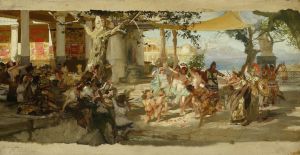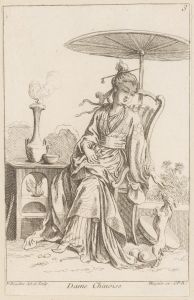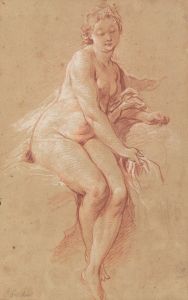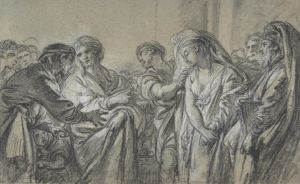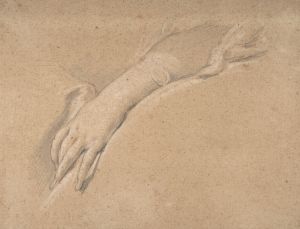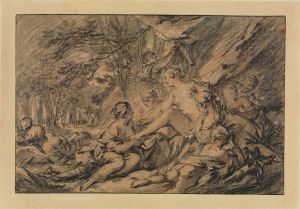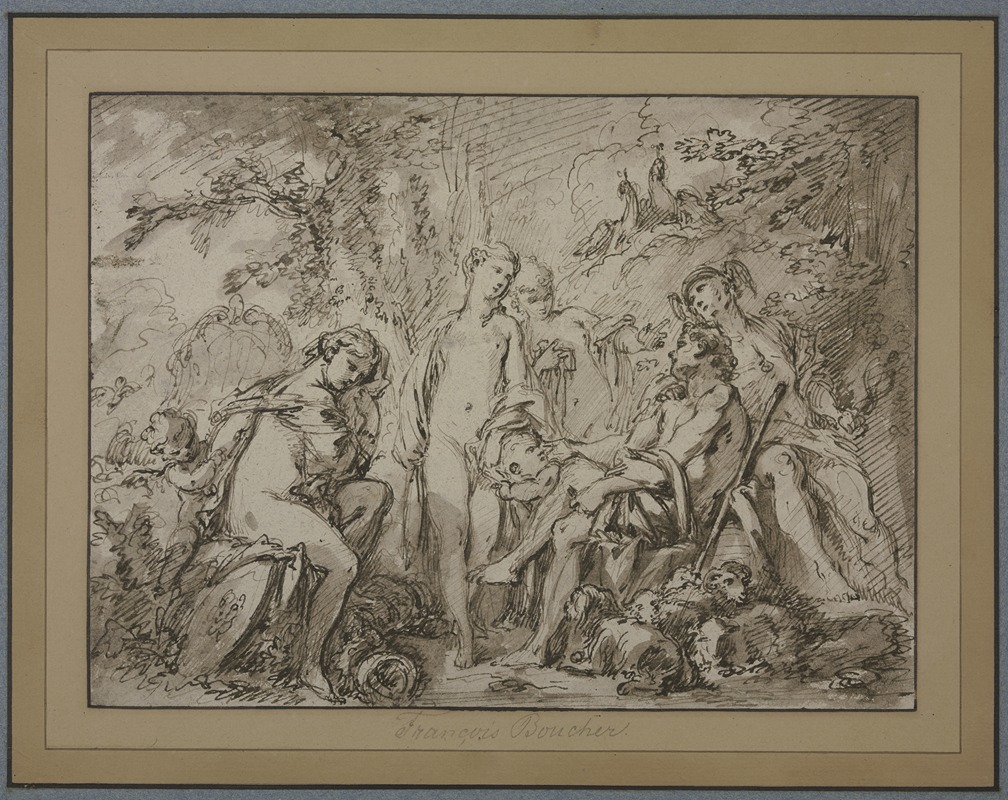
The Judgment of Paris
A hand-painted replica of François Boucher’s masterpiece The Judgment of Paris, meticulously crafted by professional artists to capture the true essence of the original. Each piece is created with museum-quality canvas and rare mineral pigments, carefully painted by experienced artists with delicate brushstrokes and rich, layered colors to perfectly recreate the texture of the original artwork. Unlike machine-printed reproductions, this hand-painted version brings the painting to life, infused with the artist’s emotions and skill in every stroke. Whether for personal collection or home decoration, it instantly elevates the artistic atmosphere of any space.
François Boucher, a prominent French painter of the Rococo style, created "The Judgment of Paris" in 1754. This artwork is one of several interpretations of the mythological story from ancient Greek mythology, which has been a popular subject for artists throughout history. Boucher's rendition is celebrated for its exquisite detail, vibrant color palette, and the graceful depiction of figures, characteristic of the Rococo movement.
The painting illustrates the story of Paris, a Trojan prince, who was tasked with determining the fairest among three goddesses: Hera, Athena, and Aphrodite. This mythological tale begins with the wedding of Peleus and Thetis, where Eris, the goddess of discord, was not invited. In retaliation, she threw a golden apple inscribed with "to the fairest" among the guests. The three goddesses claimed the apple, leading to a dispute that was eventually settled by Paris. Each goddess attempted to sway Paris with promises: Hera offered power, Athena promised wisdom and skill in battle, and Aphrodite tempted him with the love of the most beautiful mortal woman, Helen of Sparta. Paris awarded the apple to Aphrodite, setting in motion events that would lead to the Trojan War.
Boucher's painting captures the moment of decision, with Paris seated and the three goddesses standing before him. The composition is dynamic, with the figures arranged in a harmonious yet lively manner. Boucher's use of soft, pastel colors and delicate brushwork enhances the ethereal and sensual qualities of the scene. The figures are depicted with idealized beauty, a hallmark of Boucher's style, emphasizing grace and elegance.
The painting reflects the Rococo era's fascination with themes of love, beauty, and mythology, often depicted in a playful and decorative manner. Boucher's work was highly regarded during his lifetime, and he served as the court painter to Louis XV, which allowed him to influence the artistic tastes of the period significantly. His interpretation of "The Judgment of Paris" aligns with the Rococo's emphasis on lightness, frivolity, and the pursuit of pleasure.
Boucher's "The Judgment of Paris" is housed in the Wallace Collection in London, where it remains a testament to the artist's skill and the enduring appeal of classical mythology in art. The painting is an excellent example of how 18th-century artists interpreted ancient stories, blending them with contemporary artistic styles and sensibilities.
In summary, François Boucher's "The Judgment of Paris" is a quintessential Rococo painting that captures the elegance and charm of the era. Through its depiction of a well-known mythological tale, the artwork showcases Boucher's mastery of composition, color, and form, making it a significant piece in the history of art.








